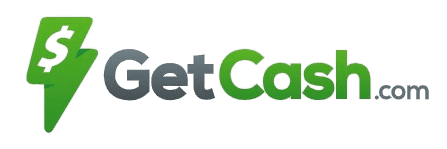Compare and Find the Best Unsecured Loans in December 2025
- Use our online loan comparison tool to find the best unsecured loans providers
- Compare rates, terms, maximum values, and origitaion fees
- Choose the one that fits your needs and apply for an unsecured loan of up to $35,000
Find your loan

Since 2014, Financer has helped 433,321 people make better financial decisions.
Reviewed by 12 people
Reviewed by 1 people
Reviewed by 40 people
Reviewed by 10 people
While we do our best to keep the data up to date, we can't guarantee the complete accuracy on a day-to-day
What Is an Unsecured Loan?
In the world of personal finance, unsecured loans play a crucial role in providing financial flexibility to borrowers.
Understanding Unsecured Loans
Unsecured loans are financial products that don't require collateral, such as a home or car, to secure the loan.
This type of lending is based primarily on the borrower's creditworthiness and ability to repay.
Unsecured loans are often referred to as "signature loans" because the borrower's signature and promise to repay are the primary requirements, assuming they meet the lender's criteria.
How Unsecured Loans Work
When issuing unsecured loans, lenders conduct a thorough evaluation of the borrower's financial profile. This assessment typically includes:
Credit score and history review
Employment status and income verification
Analysis of current debt-to-income ratio
If any of these factors don't align with the lender's requirements, the loan application may be denied.
Common Types of Unsecured Loans
Examples of Unsecured Personal Loans
Credit cards
Personal lines of credit
Home improvement loans
Student loans
Payday Loans
Unsecured loans generally involve minimal paperwork and offer a quick approval process. Additionally, borrowers don't risk losing any property since there's no collateral involved.
It's important to note that unsecured loans are best suited for short-term emergencies and should not be considered a solution to serious financial troubles.
Advantages and Disadvantages of Unsecured Loans
Advantages of Unsecured Loans
No collateral required
Quick access to funds
Competitive rates for borrowers with good credit
Less borrowing restrictions
Disadvantages of Unsecured Loans
Lower borrowing limits
Higher interest rates for low credit scores
Stricter approval process
Secured vs Unsecured Loans: Understanding the Difference
Secured loans differ from unsecured loans in that they require assets as security for the loan. This fundamental difference impacts various aspects of the loan:
| Feature | Secured Loans | Unsecured Loans |
|---|---|---|
| Collateral | Required | Not required |
| Approval Process | Often easier | More stringent |
| Interest Rates | Generally lower | Typically higher |
| Risk to Borrower | Can lose collateral | No asset at risk |
How to Qualify for an Unsecured Loan
To minimize risk, lenders carefully evaluate several factors when considering an unsecured loan application. Here's what they typically look at:
1. Your Credit Report
Lenders review your credit report to assess your credit management skills, including:
Payment history
Credit utilization
Types of credit accounts
2. Your Assets
Although unsecured loans don't require collateral, lenders may still consider your assets. Substantial savings or investments can indicate financial stability and lower risk.
3. Your Income
Lenders assess your income to ensure you can comfortably manage loan repayments. They also calculate your debt-to-income (DTI) ratio:
Your DTI is an important factor in loan approval. Here's how to calculate it:
Sum Monthly Debt Payments
Add up all your monthly debt payments (e.g., existing loans, credit cards).
Determine Gross Monthly Income
Calculate your total monthly income before taxes and deductions.
Divide Debt by Income
Divide your total monthly debt by your gross monthly income.
Convert to Percentage
Multiply the result by 100 to get your DTI percentage.
Unsecured Loans for Bad Credit
If you have a low credit score, you may still have options for unsecured loans. Some lenders specialize in offering loans to borrowers with less-than-perfect credit. However, it's important to be aware of the potential drawbacks:
Higher interest rates
Lower loan amounts
Shorter repayment terms
Unsecured Installment Loans with No Credit Check
Some lenders offer unsecured installment loans with no hard credit check during the pre-qualification process.
This allows you to see potential loan offers without impacting your credit score. However, be cautious with these types of loans, as they often come with higher interest rates and fees.
Frequently Asked Questions About Unsecured Loans
Can I get an unsecured loan with bad credit?
Yes, it's possible to get an unsecured loan with bad credit, but you may face higher interest rates and lower loan amounts. Some lenders specialize in bad credit loans.
How quickly can I get approved for an unsecured loan?
Many online lenders offer quick approval processes, sometimes within minutes. Funds can often be deposited into your account within 1-3 business days after approval.
Are there any alternatives to unsecured loans?
Yes, alternatives include secured loans, credit cards, or borrowing from friends or family. Each option has its own pros and cons, so consider your specific financial situation before deciding.
How does an unsecured loan affect my credit score?
Applying for an unsecured loan typically results in a hard inquiry on your credit report, which may temporarily lower your score. However, making timely payments on the loan can positively impact your credit score over time.
Understanding unsecured loans is crucial for making informed financial decisions. Whether you're considering a personal loan, student loan, or credit card, it's important to weigh the pros and cons and compare offers from multiple lenders.
Remember, while unsecured loans can provide quick access to funds, they should be used responsibly and not as a long-term solution to financial difficulties. Always consider your ability to repay before taking on any new debt.





